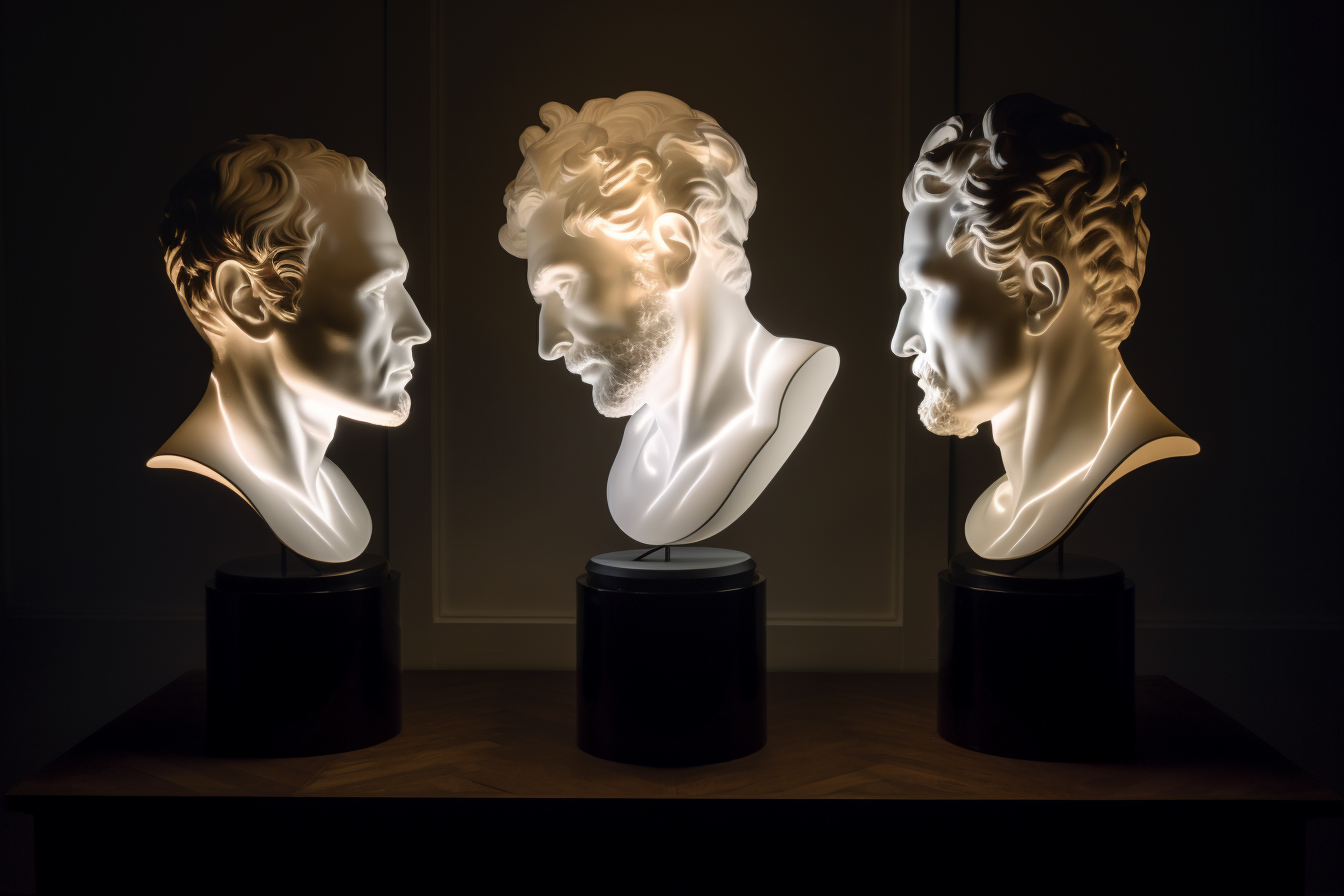Lighting plays a key role in art and design, creating atmosphere, highlighting details and adding visual impact to works of art. In recent years, LED lights have gained popularity in these sectors thanks to their versatility, energy efficiency and sustainability. The purpose of this article is to discuss the use of LED lights in different fields of art and design and their impact on aesthetic values and the environment.
LED technology offers many advantages over traditional light sources: it allows the design of smaller, thinner and more flexible luminaires, as well as a wider colour gamut. In addition, the long lifetime and low energy consumption of LED lights make them an attractive option for professionals and amateurs alike. In the future, we can expect more innovative applications of LED lighting in art and design, which may further change our understanding of the role of light in our creative work.
The versatility of LED lights
Diverse lighting solutions can help the art and design world create stunning visual experiences and innovative and functional spaces. Innovations in LED technology have enabled the use of more versatile light sources, offering a wide range of colours, brightness and design possibilities. This means that LED lights can be used to realise sophisticated artistic visions, highlight architectural details or exploit the effect of colour in interior design.
The versatility of LED lights is not only limited to their ability to produce lights of different colours and intensities, but also to their energy and cost efficiency and long lifetime. This makes them ideal for both permanent and temporary art and design projects. For example, a work or exhibition in a public space can benefit from the durability of LED lights, while a work of art in the home or workplace can provide a unique atmosphere in an energy-efficient way.
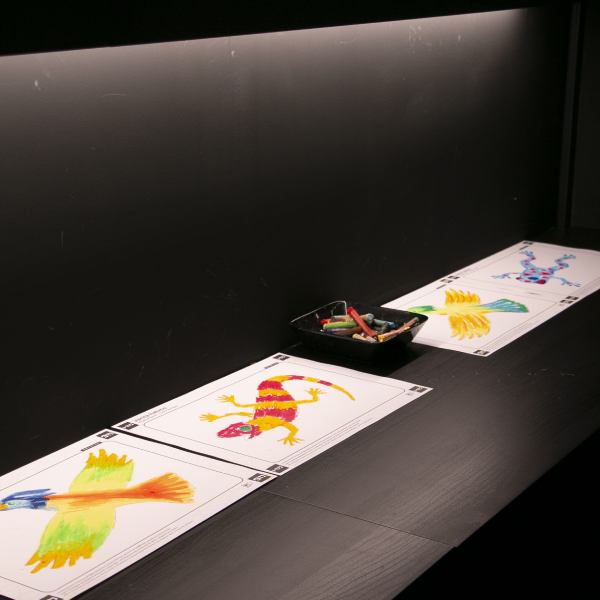
Artists and designers can use the versatility of LED lights to create interactive works and spaces where the colour, brightness or direction of light can change according to the viewer’s movements. Such experiences bring art and design closer to people’s everyday lives and offer new ways of communicating and experiencing the world around them. LED lights also enable the creation of experiential spaces in hotels, restaurants or shops, for example, where customers can experience a unique atmosphere and at the same time get to know the company’s brand more deeply.
The role of lighting in art and design
The importance of lighting in art and design is undeniable, as it helps to create atmosphere and highlight details in works of art. The interplay of light and shadow is a key element in creating visual expression, with lighting control having a significant impact on the interpretation and experience of the work. Creating atmosphere is about how the lighting supports the theme and emotional message to the viewer or user.
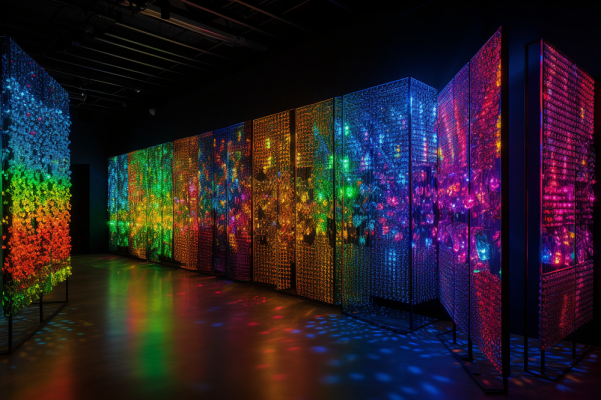
Play of light and shadow
The dynamic interaction of light and shadow creates depth, contrast and interesting visual effects in artistic and design projects. The aesthetic of shadow is an essential part of the work of many artists and designers, helping to create vibrancy, atmosphere and nuance in their work. The manipulation of light, on the other hand, allows light and shadow effects to highlight or hide certain elements and direct the viewer’s attention to the desired areas. The use of different materials such as glass, metal or textiles in combination with light can produce different types of shadows and reflections, giving further dimensions to visual expression.
The use of LED lights in art and design offers new opportunities to explore the interplay of light and shadow. LED lights are energy-efficient, durable and flexible light sources that allow for versatile applications in interior design and public spaces. For example, architectural lighting can be used to create spectacular light and shadow effects on building facades and interiors, enhancing the aesthetics and functionality of a space.
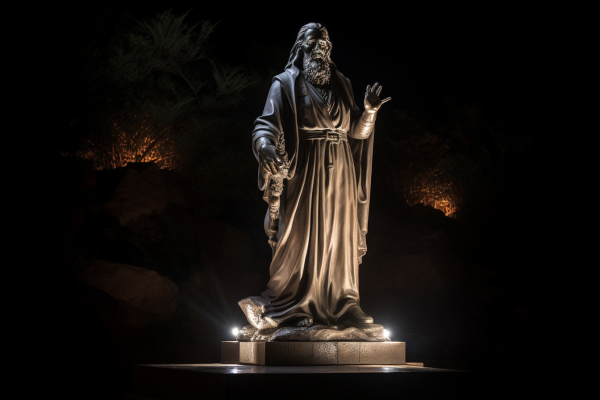
In artistic installations, LED lights can also be used to create dynamic and interactive light works that change according to the viewer’s movements and senses. Thus, LED lights offer new possibilities for exploring the interplay of light and shadow and their use in art and design.
Creating an atmosphere
Creating atmosphere is an important part of the artistic and design process, using the interplay of light and shadow to create different visual effects. The use of LED lights in art and design opens up a wide range of possibilities for creating atmospheric installations and emotional lighting.
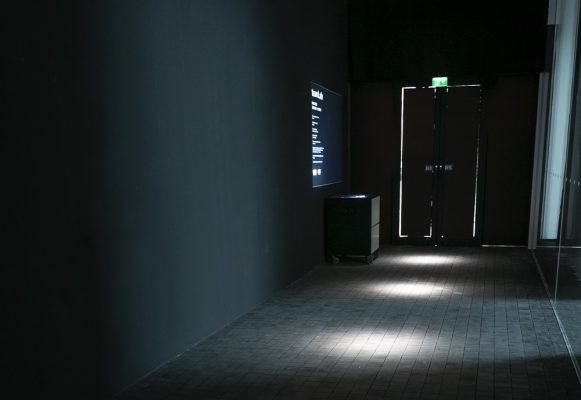
LED lights can be used to create a variety of colour combinations and dynamic changes in light intensity and hue, creating vivid visual experiences. Light artists can create impressive spatial works in which the movement of light, a change in colour or intensity evokes emotions in the viewer’s mind. Designers can use the properties of LED lights in their interior design or architectural projects to bring out the character of different spaces and guide people’s emotions, for example in party rooms or urban environments.
LED lights can also add new depth to traditional visual art installations, such as paintings or sculptures, by adding three-dimensional illumination and optical illusions. Art and design professionals can unleash their creativity through the possibilities offered by LED lights, reflected in the rich visual language of the works and their ability to evoke strong emotional responses from their viewers.
The use of LED lights in different fields of art and design
Different lighting techniques play an important role in the visual expression of both artistic and design projects. LED lights are one such lighting solution that has gained a foothold in projects in various fields, such as architecture, theatre and performance art. LED lighting allows for versatile and spectacular lighting effects that support the visual expression and communication of works. Lighting design, on the other hand, helps to create atmosphere and direct the viewer’s attention to the desired objects.
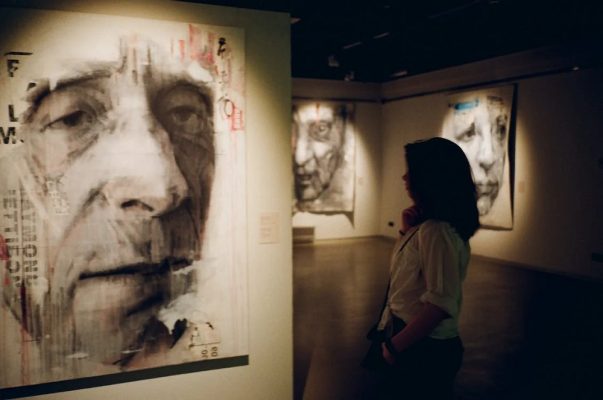
There are many different ways to use LED lights in art. For example, in an installation or media artwork, they can act as elements that complement or highlight other content. In performance art, LED lights can be used on performers’ costumes or sets, for example, to create a dynamic and cinematic experience for the audience. Also in theatre productions, LED technology offers new possibilities for costume, set and sound design, integrated as part of a holistic audiovisual expression.
In architecture and interior design, LED lights can be used to create lighting solutions that enhance the aesthetics and comfort of buildings. They can be used to highlight facades, support the composition of spaces or provide energy-efficient lighting, for example. In addition, LED lights offer the possibility of more environmentally friendly lighting thanks to their long lifetime and energy efficiency. Thus, the application of LED technology in different fields of art and design contributes to both visually impressive and sustainable solutions.
Energy efficiency and sustainable development
Energy efficiency and sustainability are key issues in the modern art and design field, as they have a crucial impact on the environmental impact and aesthetic values of the works created. The use of LED lights has become one of the most significant innovations in art and design because they offer significant energy savings compared to traditional light sources. In addition, the continuous development of LED technology is enabling the creation of new, more environmentally sustainable lighting solutions.
- Lighting control systems: allow you to adjust lighting according to your needs, reducing energy consumption.
- Integration of smart technology: for example, motion sensors or sunlight-based systems save energy in an automated way.
- Application of circular economy principles: reuse of old materials or modular structures that facilitate repair and upgradingá.
- Use of bio-based or recycled materials: for example, in LED light housings, which reduces the environmental impact of luminaires.
When talking about sustainable development in art and design, it is important to consider not only energy efficiency, but also the broader perspective of, for example, material selection and production processes. The use of LED lights offers many advantages in this area, but designers and artists should always be looking for new ways to make their work even more environmentally friendly. This allows them to create innovative and beautiful works while acting responsibly for the well-being of the environment.
Future prospects for the use of LED lights in art and design.
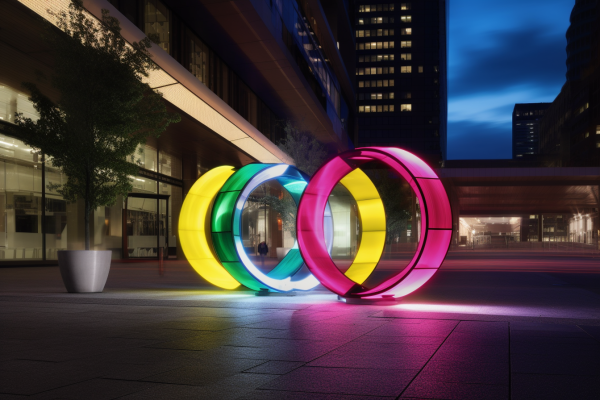
In the future, as lighting technology develops, we expect to see more innovative and environmentally friendly solutions in art and design. Innovations in LED technology open up new possibilities in terms of both visual appearance and functionality. As a result, we can expect future art and design projects to make increasing use of technologies such as programmable lighting, which allows for the creation of a variety of atmospheres and energy-efficient use.
Intelligent lighting means that lighting systems are connected and communicating devices that can react to different situations and changing conditions. In art and design, such systems can add dimension and vitality to works of art and bring new dynamics to the user experience. For example, interactive installations or sound-driven works can provide a unique and personalised experience for the viewer or user.
In line with the principles of sustainable development, the use of LEDs in art and design is likely to focus more on energy efficiency and recyclability of materials in the future. In addition, lighting solutions can be designed with ecosystems and human well-being in mind, for example by creating lighting that supports human biological rhythms or promotes plant growth. Thus, the role of LED lights in art and design may become increasingly important not only from a visual appearance but also from a sustainable development perspective.
Frequently asked questions
How do the colour and brightness of LED lights affect the experience of art and design?
The psychology of colour and the ergonomics of lighting are key factors when considering how the colour and brightness of LED lights affect the experience of art and design. Colours can evoke different emotions and images in the viewer, which is why artists and designers use them as effective tools to express their work. From an ergonomic point of view, light brightness is important for the perception of spaces, visual comfort and energy efficiency. LED lights allow for a wide range of colour scales and adjustable brightness, giving artists and designers even more freedom to create innovative and unique works. As a result, LED lights can enhance the depth of experiences based on aesthetic elements and support the functionality of the surrounding space.
Are there specific techniques for installing LED lights in art and design works?
Using a variety of techniques, installing LED lights in art and design works can be both aesthetically pleasing and sustainable. These technologies include modular design for easier installation and maintenance, and programmable luminaires that can be adjusted to the desired colour and brightness to best suit the overall look of the work. The effect of lighting is an important element in such works, as it creates a dynamic experience for the viewer or user, shaping the visual appearance in different ways.
Are LED lights safe to use in all art and design contexts, for example when working with children?
The lifetime and energy efficiency of LED lights are important advantages for their use in many different fields, including art and design. However, it is important to consider safety in all situations, especially when working with children. In general, LED lights are much safer than traditional incandescent or halogen lights, as they produce less heat and do not contain harmful substances such as mercury. Their long lifetime and energy efficiency also make them a more economically and environmentally sustainable option. This is why LED technology is usually the right choice for children’s projects. However, it is important to take appropriate precautions when installing and using lights to minimise potential risks – for example by positioning the lights so that children cannot touch them directly or by using protective housing for sensitive components.
How does the use of LED lights in art and design affect the value of a work of art, and does it matter to collectors and investors?
Brilliant LED lights bring stunning illumination to art and design works, attracting sensitive observers and adding value. However, it is important to bear in mind that the value of a work does not depend on the light source, but also on its innovative application. The use of LED lights in art and design can make a significant difference to the value and attractiveness of a work of art for collectors and investors, as they do not produce UV radiation which is harmful to paintings.
Results from
In conclusion, the extraordinary versatility of LED lights has revolutionised the fields of art and design. Artists and designers from all sectors have embraced LED lights for their energy efficiency, sustainability potential and endless creative possibilities.
The future undoubtedly offers a bright prospect for the incorporation of LED technology into artistic and design projects. As sustainability becomes a priority, these innovative lights continue to light up our world with dazzling visual spectacles beyond imagination.
Led lighting expert
LedStore has been an expert in led lighting since 2010. We have our own product design, so our products are technologically state-of-the-art.
We focus on light colour temperature controlled and high colour rendering index lights. We do around 500 lighting designs in a year.
We offer a service of custom made led strips, i.e. custom made led light strips in profile. Also installed.
Remember that we are always ready to offer our help to you along the way, by email (myynti@ledstore.fi) and by phone (045 251 4510). As always, feel free to share photos of your own projects on social media at ledstore.fi at Instagram and ledstore.fi at Meta. We love to see the cool things done by our LEDs, and it also helps to provide inspiration for those who are not sure about the power and awesomeness of LEDs. Did you know that we already have over 3500 pictures of our LED installations in our Gallery!
Gallery of Led lights:
Product gallery: pictures of products in different installation locations (e.g. track lighting)
Indirect light: Indirect light in different spaces
Room-specific: Light in different rooms
References: Complete houses that have been photographed

